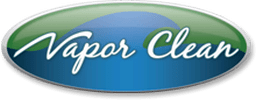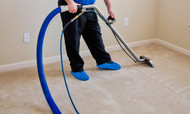Understanding the Basics of Steam Cleaning
Aug 27, 2019
WHY SHOULD I USE STEAM INSTEAD OF MY USUAL CLEANING PRODUCTS?
"Anything you can do, I can do better!" Steam will restore dirty tile and grout, get rid of baked-on grease in ovens or barbecues and reach grimy, out of the way spots that most people dread to even consider... but more on the power of steam later. There are other reasons – health reasons – you need to hear.
Let's equate the use of infant skin care products with the use of solvents around the home. The health-wise maxim is to avoid applying anything on baby's skin that the wee one shouldn't ingest. Now take that concept and think about how your body comes in contact with chemicals that are used on the surfaces around your home: furniture polish lingering on the dining room table, floor cleaner residue that attaches itself to bare feet, the ammonia used throughout the bathroom. So, would you rather absorb these nasty chemicals or have contact with the only thing a steam cleaner needs to operate – pure, clean water?
NEW AND IMPROVED? FORGET ABOUT IT!
If keeping your family chemical-free is not enough to convert you to the virtues of steam cleaning, think about your shrinking shopping list. After your initial investment in a Reliable steam cleaner, there will no longer be a need to buy the dozen or more cleaning products that line the shelves in your laundry room. You no longer need to stand transfixed in the cleaning aisle, wondering which "New and Improved" product will do the best job because you won't need them. No creams, no powders, no floor cleaners.
WHERE DO THOSE CHEMICALS GO?
Using steam is healthy for our planet too. Chemicals used in cleaning products, more often than not, get washed down the drain – like the big bucket of dirty water mixed with floor cleaner or the blue stuff that's swishes around your toilet. And where do they end up? They end up in a few different places – like in our water supply, threatening waterways and the wildlife that depend on these areas to feed and exist; some are even considered to be "hormone disruptors" that don't biodegrade. Environmentalists estimate that an average household's cleaning products contribute about 8% of total non-vehicular emissions of organic compounds, which not only pollute the air, but also cause eye, nose and lung irritation, as well as rashes, headaches, nausea, asthma, and, in some cases, cancer. The final, but probably not the last place they end up is in our water table, which feeds our drinking supply.
DUST MITES: WHAT YOU DON'T SEE CAN HURT YOU.
Dust mites, the irritating cousins of the tick and spider, are quite at home in your home, or more specifically, in your mattress, upholstery, rugs, carpets, quilts, pillows and your children's stuffed animals. In these soft and plush environments, they feed on flakes of dead skin shed from humans and animals and other fibrous materials. These critters then leave their waste matter behind – a major allergen and asthma trigger. Here's some simple math for you: the dust mite deposits up to twenty droppings a day and the average bed can be infested with millions of mites. We are in bed on average eight hours per day, so we are side by side with a lot of debris that can make us feel as though we haven't been in bed for eight hours.
So what does this have to do with steam cleaning? Well, the same way steam kills the different stages of fleas, steam will obliterate the dust mite hotels in your mattresses, carpets and at other mite gatherings. Regular steam cleaning followed by vacuuming to pick up the debris will make a significant difference in the your home's air quality and most importantly, your family's health.
SO HOW DOES PRESSURIZED STEAM WORK AS AN EVERYDAY CLEANER?
When steam is forced onto a surface, the very small vapor molecules are able to penetrate the pores. The vapor molecules, when coming into contact with the cool surface of the pores, quickly and powerfully expand and force out all dirt, grease, detergents, bacteria and basically any particles that don't naturally belong on the surface. The added bonus is the heat of the vapor molecules, which kills bacteria and other pathogens like molds, fleas, flea eggs and dust mites. The result is a surface that is sanitized, deodorized and hypoallergenic. A thorough job of cleaning also means you won't have to work as hard the next time around!
IT SOUNDS LIKE A COMPLICATED MACHINE. IS IT EASY TO USE?
It is so user-friendly that once you understand the basics of the Reliable Steam Cleaner, it will be as easy as using a vacuum cleaner. Here's how it works: tap water is poured into the stainless steel boiler tank. With the turn of a dial, the water in the boiler tank is pressurized and heated for approximately 7 to 12 minutes (depending on the model) until it reaches a temperature between 302 and 320 degrees Fahrenheit. During this brief start-up time, you connect the most efficient combination of attachments from the accessory kit to the main hose for the job at hand. A large brush with a sole plate attachment allows the brush to run smoothly over carpet and a smaller brush can be used for upholstery and other textiles. There is also a high-pressure nozzle that can be used with or without the nylon and brass brushes for light to heavy "scrub and steam" jobs from enamel sinks to car wheel rims.
There is pretty much nothing in your home that a steam cleaner cannot tackle. Steam clean the following without added fumes and without exposure of chemicals to you and your family:
- tile floors
- sealed hardwood floors
- grout
- ovens
- stove-tops
- windows
- mirrors
- pet areas
- carpets
- workout rooms
- bbq grills
- sinks
- bathtubs
- children's toys
- stuffed animals
- mattresses
- blinds(non-fabric)
- car wheel rims
- upholstery
- radiators
- car interiors
- pillows
- shower floors
- fridges
- freezers
- toilet bowls
Source - https://reliablecorporation.com/blogs/learning-cen...

